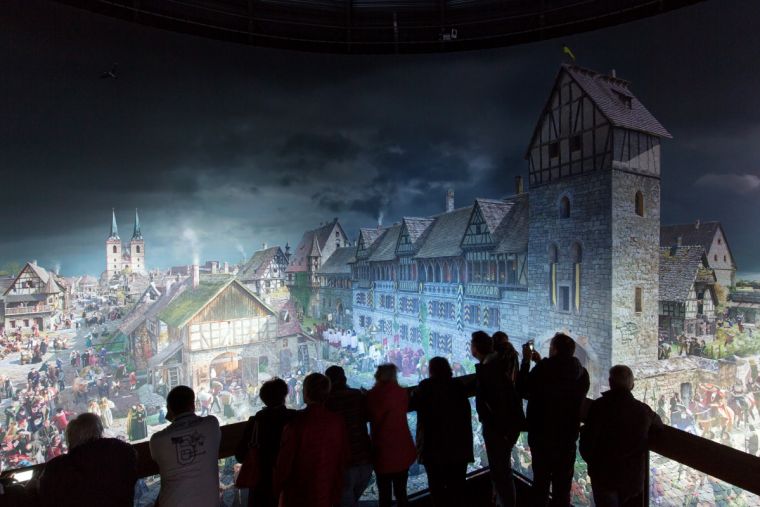Luther 1517: How you can see the Reformation through Martin Luther's eyes
This year marks the 500th year of the Reformation, conventionally held to have started on October 31, 1517, when Martin Luther nailed his 95 Theses to the door of the Castle Church in Wittenberg.
Whether it happened exactly like that is open to dispute, but Wittenberg is the centre of a year of celebrations. The homes of Luther and his collaborator Philip Melanchthon are museums, the former a world centre of Luther studies, while the lovely town in Saxony-Anhalt is welcoming tens of thousands of visitors.

Among the most extraordinary sights is one that's thoroughly modern, though it brings the past to life in an extraordinary way.
Yadegar Asisi is an artist of Iranian extraction, born in Vienna and raised in Saxony. Since 1993 he has been constructing giant 360-degree panoramas that allow visitors to experience an entire landscape as though they were part of it –and he's made one for Wittenberg.

Luther 1517 is 15 metres high and 75 metres across. It's like being on the inside of a drum (there's a viewing platform in the centre). And every inch is covered with scenes from Luther's life in Wittenberg, created in hyper-realistic detail with cutting-edge digital technology. The scenes were posed by real actors, photographed and digitally stitched together, then printed on special rolls of fabric. The effect is magical, especially when the lighting changes and the scene moves from daylight through evening and darkness to dawn in a 20-minute cycle.

The detail and depth of thinking behind the panorama is remarkable. There's 16th-century street life, like the one-legged beggar and his dog. There are nobles, peasants and forlorn children, and lots of animals. There's even a brothel, and a bath house. Frederick the Wise rides in procession into the town. Luther preaches; Luther wrestles with Thomas Muntzer, the dangerous Anabaptist, and rows with the dreadful Friar Tetzel, whose selling of indulgences precipitated the whole thing; and here is Luther tearing an indulgence from a woman's hands and nailing his poster on the church door (he appears in 14 different scenes).

But if this is a history project, it is as much Horrible Histories as anything else. A Jew is abused, reflecting Luther's hateful antisemitism. In the distance a cloud of smoke rises: a woman suspected of witchcraft is being slowly burned alive with her sons after a drought and famine. It was not Luther's doing, but he was in the town at the time. Books are being burned, but books are being packed into barrels and carted off out of the city to spread the word of Reform, too. Alongside them is a cartload of dung, a not-so-subtle joke by the artist: yes, the Reformation achieved great and good things, but the virtues of the Reformers give us no excuse for ignoring their sins.

It is an expensive project – around €4.5 million. But it will be in situ for around five years, and it is an extraordinary perpective on Luther's life. Wittenberg itself is very pretty and unspoilt, and the street plan is just the same as it was in Luther's day – but Luther 1517 arguably gives a better idea of what it was like to walk its streets 500 years ago.
Follow Mark Woods on Twitter: @RevMarkWoods











